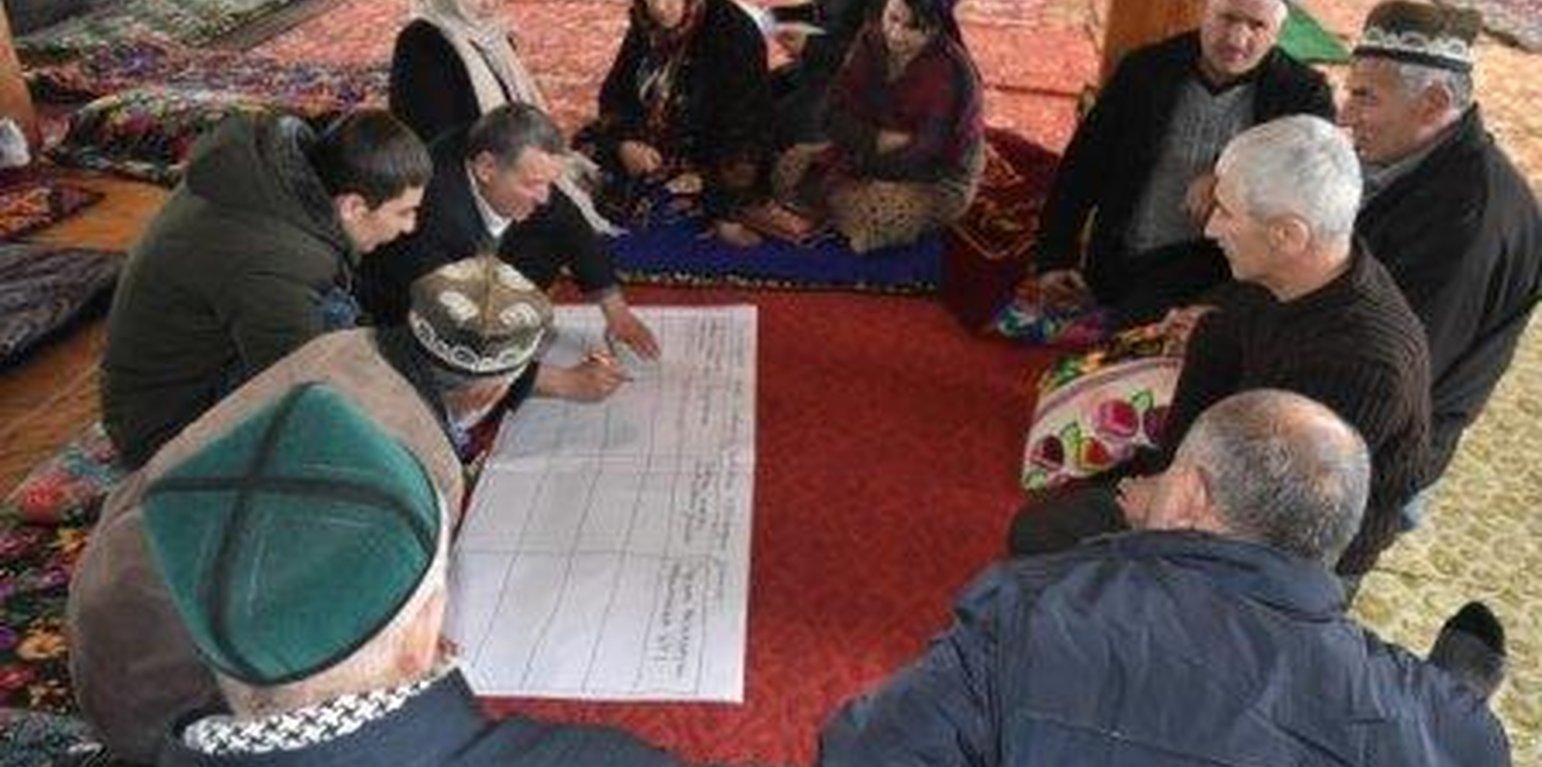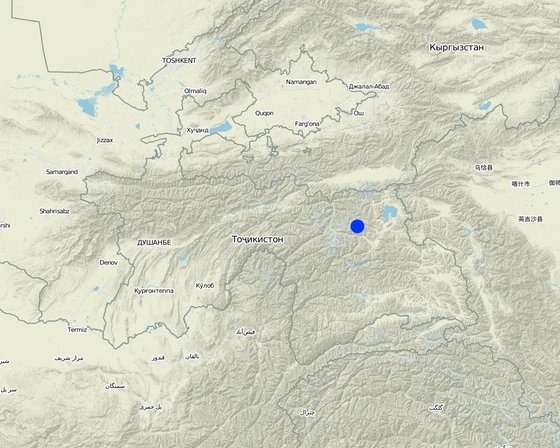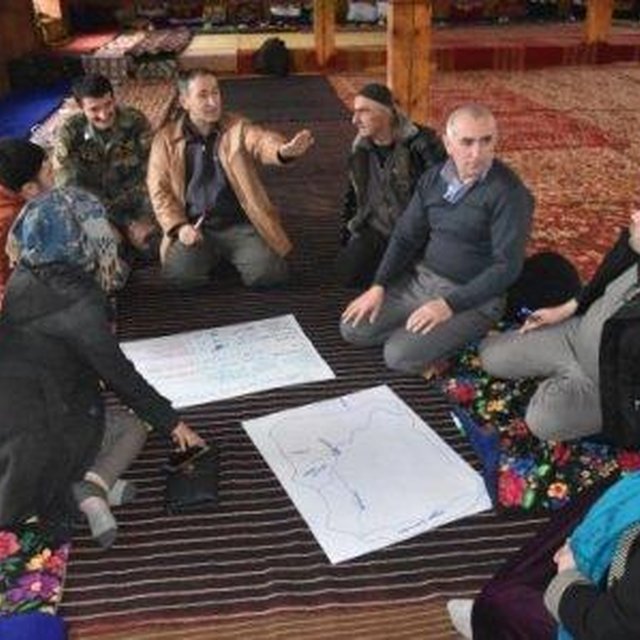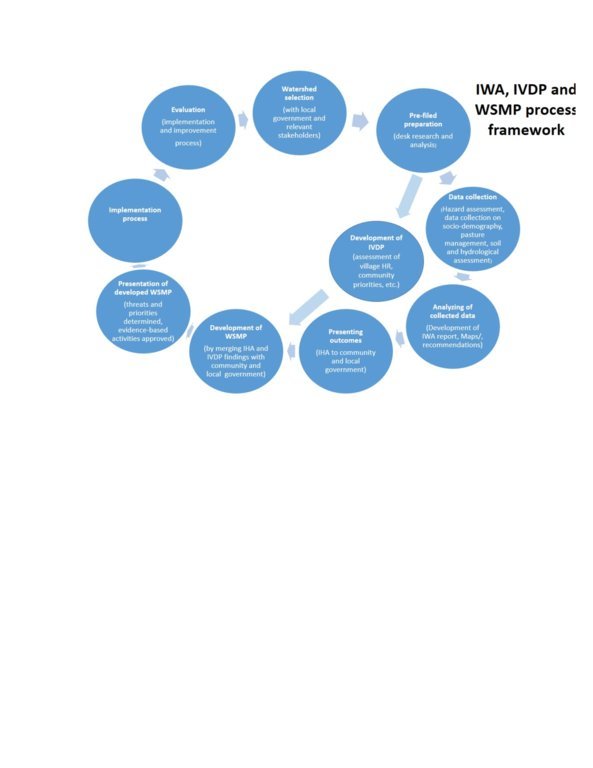



In the participatory WMPs, the main emphasis is placed on identifying critical factors (or so called thresholds) in the sub-watershed and identifying management actions to reduce the potential of negative effects of these factors on the sub-watershed ecosystems and livelihoods. In the process of participatory WMP stakeholders will identify factors that people can control and factors they cannot control. The planning is different for factors that people can control (mitigation of risk factors), for instance sustainability measures of access to safe and clean drinking water, and factors they cannot control (adaptation to risk factors), for instance melting of glaciers and formation of risk-posing glacial lakes.
In WMPs stakeholders collaborate with the technical team to incorporate key findings of the Integrated Habitat Assessment (IHA). To enhance community ownership and participation in the implementation of local development plans, communities and local authorities will be fully involved in the identification, implementation, and handover of the planning process and intervention implementations.
Based on the action plan developed as a result of participatory WMPs, interventions will be implemented to regenerate, protect, or enhance land/resource conditions in the different parts of each sub-watershed in a holistic manner in line with the IWSM approach. Projects at the village level will be identified based on the village management plan and projects operating at the sub-watershed or multi-village level will be informed by WMPs. The resilient NRM activities will be designed to specifically contribute to the improved land use and stabilization of degraded areas in the sub-watershed. During design, protection and synergies will be considered with socio-economic development project.
The WMPs will be prepared for the purpose of enhancing communities’ sustainable development through building capacities and capabilities of local communities to manage and reduce risks from natural hazards, to improve natural resources management, land use planning and pasture management. To conduct the WMP process, a working group will be established at the sub-watershed level, which will include the head of the jamoat(s), representatives from relevant district government departments (Land Management, Geology, Agriculture, Environmental Protection), and representatives from local community based organizations.
The preparation process of the WMPs will be closely coordinated and consulted with the community based organizations as well as local governments with plans conducted at the sub-watershed level. It is tentatively planned that ownership of the plans will fall to either the jamoat government (if a sub-watershed covers only one jamoat) or the district government (in the case of sub-watersheds covering more than one jamoat). However, the ownership model and other aspects of WMP process is still not clear and should be piloted in a different scenario. The WMPs will enable the target sub-watersheds to make comprehensive planning and take into account socio-economic, disaster management, and natural resources management aspects.
As a result of this process, three WMPs were developed at three sub-watershed level in Rasht Valley of Kuksu, Surkhdara and Nushor sub-watersheds. As a result the watershed committee was supported with implementation of interventions, where immediate action was required to prevent further degradation. For example in the Nushori bolo sub-watershed in consultation with government and community mobilization it was agreed to ban grazing in the most degraded upper zone of the pasture, which had also a risk of landslide. In a short period after limiting grazing the pasture areas in the upper zone of watershed started to rehabilitate.

ទីតាំង: Rasht Valley, Faizobod District, Sub-ordinate regions, ប្រទេសតាហ្ស៊ីគីស្ថាន
កាលបរិច្ឆេទចាប់ផ្តើម: មិនមាន
ឆ្នាំបញ្ចប់: មិនមាន
ប្រភេទនៃវិធីសាស្ត្រផ្សព្វផ្សាយ

| តើមានភាគីពាក់ព័ន្ធ/ភ្នាក់ងារអនុវត្តន៍ណាខ្លះដែលបានចូលរួមក្នុងវិធីសាស្ត្រផ្សព្វផ្សាយ? | សូមបញ្ជាក់ភាគីពាក់ព័ន្ធ | សូមពណ៌នាតួនាទីរបស់ភាគីពាក់ព័ន្ធ |
| អ្នកប្រើប្រាស់ដីក្នុងតំបន់/សហគមន៍ | community members - farmers, livestock owners, forest owners | As first level of land users they are responsible for overall management of the natural resource and its conservation. |
| អ្នកស្រាវជ្រាវ | researches - pasture specialist, geobotanics, soil specialist, hydrologist | are involved in technical assessment of the resources and support communities integration of findings into their plan |
| គ្រូបង្រៀន/សិស្សក្មេងៗ/សិស្ស-និស្សិត | teachers on natural sciences and secondary school management | participate in the awareness raising session and support with knowledge sharing with schoolchildren, also use the new knowledge during classes. |
| អង្គការក្រៅរដ្ឋាភិបាល | MSDSP Mountain Societies Development Support Programme | mobilization of stakeholders in development of their participatory plans |
| រដ្ឋាភិបាលថ្នាក់មូលដ្ឋាន | all departments on natural resources management - land, forest, water, pasture | controlling, supervision and mainstreaming the new approach into their working plan |
The watershed management circle including the whole circle of the planning process, starting from watershed selection up to evaluation.

ការសម្រេចចិត្តត្រូវបានធ្វើដោយ
ការសម្រេចចិត្តត្រូវបានធ្វើដោយផ្អែកលើ៖
Watershed Management
Certain amount of funding was made available in the first phase to implement part of the action plan under the Watershed Management Plan
community members were fully involved in the planning process and participated in decision making with regards to interventions. in addition community members were selected to become member of working groups, which have the opportunity to participate in the overall management of the watershed
the approach leads to the development of action plan with the expertise from SLM experts where different technologies are applied as a result of implementation of the actions related to watershed improvement
it involves also capacity building of the stakeholders and improves their awareness on the watershed management approach
It brings all stakeholders together to make decision with agreement with each other. women and girls also participated actively at the community planning process and were involved in the decision making
in the implementation process of intervention mainly were involved youth jointly with technical project team, NRM specialist and bio-soil engineering and had a chance to learn new technologies and skills
beside overgrazing, heavy precipitation in the last years have exacerbate the pasture degradation. through introducing new measures this contribute to minimize the effect of the heave precipitation, which is the cause of climate change.
it only enable stakeholders and land users with improvement of land use and disaster protection